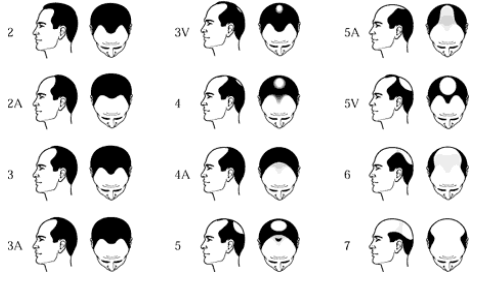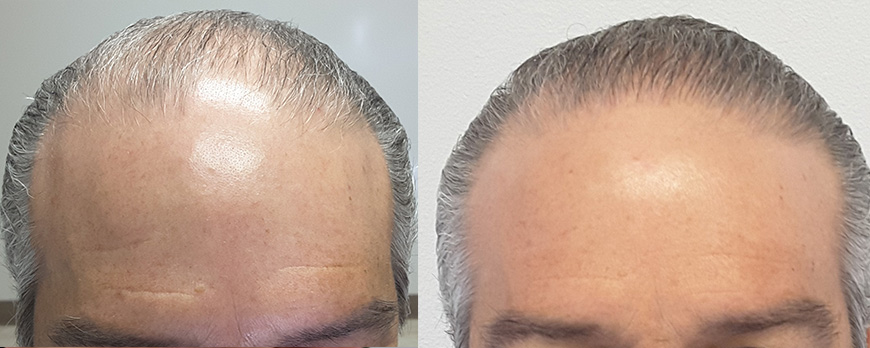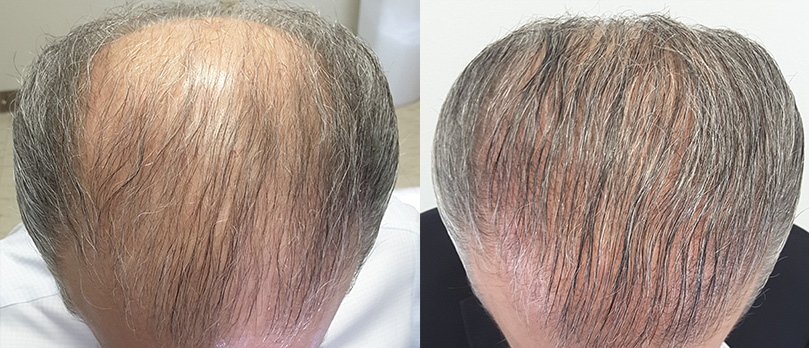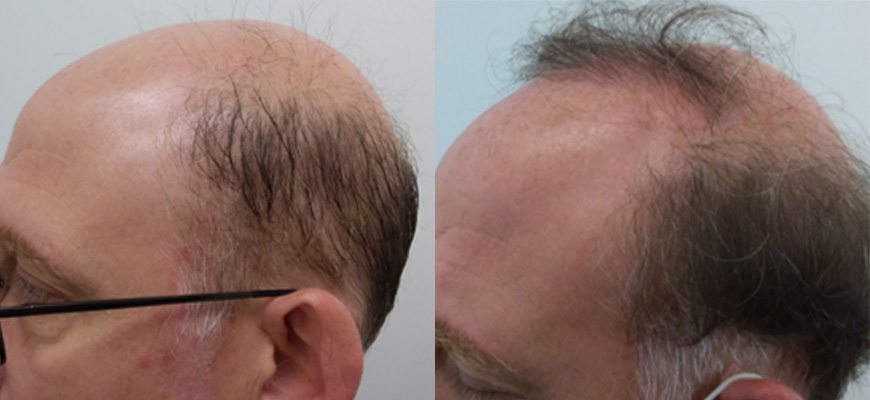Hair loss is a common concern for many people, and it can be stressful to experience. When it comes to understanding and classifying hair loss patterns, we, as hair loss specialists, use what is known as the Norwood scale.
The Norwood scale helps determine the stage and extent of hair loss, especially in male pattern baldness. It is also useful in determining an appropriate hair loss treatment, such as medicinal or surgical options.
In this series we are going to be focusing on the different treatment options available at each level on the Norwood scale. This can help you determine what to expect when visiting your hair loss specialist in terms of possible non-surgical treatments as well as whether a hair transplant is right for you.
We still recommend that you make an appointment for a consultation with a hair transplant surgeon to get their expert opinion, but having a basic understanding of the Norwood scale and which level you may be at in your hair loss, will allow you to manage your expectations before you come into the office.
What is the Norwood Scale?

The Norwood scale, also known as the Hamilton-Norwood scale, is a visual classification system used to assess the extent of male pattern baldness. It was first introduced by Dr. James Hamilton in the 1950s and later revised by Dr. O’Tar Norwood in the 1970s. The scale consists of seven stages, ranging from no hair loss (Stage 1) to extensive baldness (Stage 7).
Understanding Norwood 6 Hair Loss
Norwood 6 is a significant stage on the scale, indicating a high degree of hair loss. At this stage, there is extensive hair loss on the top of the scalp, with only a narrow band of hair remaining along the sides and back. The remaining hair may be thin and sparse, making the scalp more visible but in some patients, even this narrow “horseshoe” may be quite thick and dense.
Progression to Norwood 6 can vary from person to person. Some individuals may reach this stage relatively quickly, while others may take years to progress to this level of hair loss. Factors such as genetics, age, and hormonal changes can influence the rate of hair loss progression.
Once you reach Norwood 6 treatment options are still available, but expectations need to be managed properly. Due to the widespread hair loss on the top of the scalp, there is not enough remaining healthy follicles around the base to replace all the hair you have lost so you may not qualify for a hair transplant but there may be some options for you.
Treatment Options for Norwood 6 Hair Loss
Medicinal Treatments
Finasteride (Propecia): Finasteride is an oral medication that works by blocking the production of dihydrotestosterone (DHT), a hormone that contributes to hair loss. It is most effective in preserving and regrowing hair that is miniaturized but it can bring back follicles that have completely died or “fibrosed,” meaning they have become scarred.
Minoxidil (Rogaine): Minoxidil is a topical medication that is applied directly to the scalp. It works by increasing blood flow to the hair follicles, promoting hair growth.
Minoxidil is also more effective in maintaining or regrowing existing hair. It cannot regrow hair follicles that are gone so your doctor is less likely to prescribe minoxidil if you’ve already reached Norwood 6.
Finasteride and minoxidil can be effective in slowing down hair loss and promoting hair regrowth in individuals with Norwood 6 hair loss. However, the effectiveness of these medications can vary from person to person, and results may not be as significant as in earlier stages of hair loss.
Surgical Hair Loss Treatments
Hair Transplant (Follicular Unit Transplant – FUT or Follicular Unit Extraction – FUE): Hair transplant surgery involves removing hair follicles from the donor area (usually the back of the scalp) and transplanting them to the balding areas. FUT involves removing a strip of skin with hair follicles that are then separated into individual hairs, while FUE involves excising individual follicular units with a small punch.
Hair transplant surgery can be effective in restoring portions of the lost hair in Norwood 6 cases, but it depends on the individual case and may require multiple sessions for optimal results.
If there are not enough healthy hair follicles at the base of the scalp, or your doctor feels that the progression may continue into the current healthy area, it may not be wise to undergo a hair transplant at this stage.
Norwood 6 Hair Transplant Results [Images]
Below you will find images of patients that have undergone hair transplant surgery to help correct Norwood 6 hair loss. These patients displayed considerable hair loss consistent with Norwood 6 and have opted for surgery in order to regain a fuller head of hair. In cases like this, the main object is to improve the hairline in order to frame the face. The hairline serves to direct attention towards your eyes during human interactions. It is what you see when you look in the mirror, and it’s the crucial portion of hair for grooming purposes. There is never enough hair to cover the entire top of the head, so the surgical strategy is to maximize the visual impact.
Howard (1st and 2nd photos) was also started on finasteride prior to surgery and while this did not grow hair on top of his head, it did improve the donor hair considerably. Ultimately, this helped the success of his hair transplant since his donor was much fuller before and after surgery by blocking the effects of DHT.



Norwood 6 Hair Loss
Norwood 6 represents a significant stage of hair loss, indicating extensive balding on the top of the scalp. While medical treatments like finasteride and minoxidil may help slow down hair loss and promote hair regrowth to some extent, hair transplant surgery may be an option for restoring the hairline in Norwood 6 cases.
It is essential to consult with a qualified hair loss specialist to determine the most suitable treatment plan based on individual needs and expectations.







